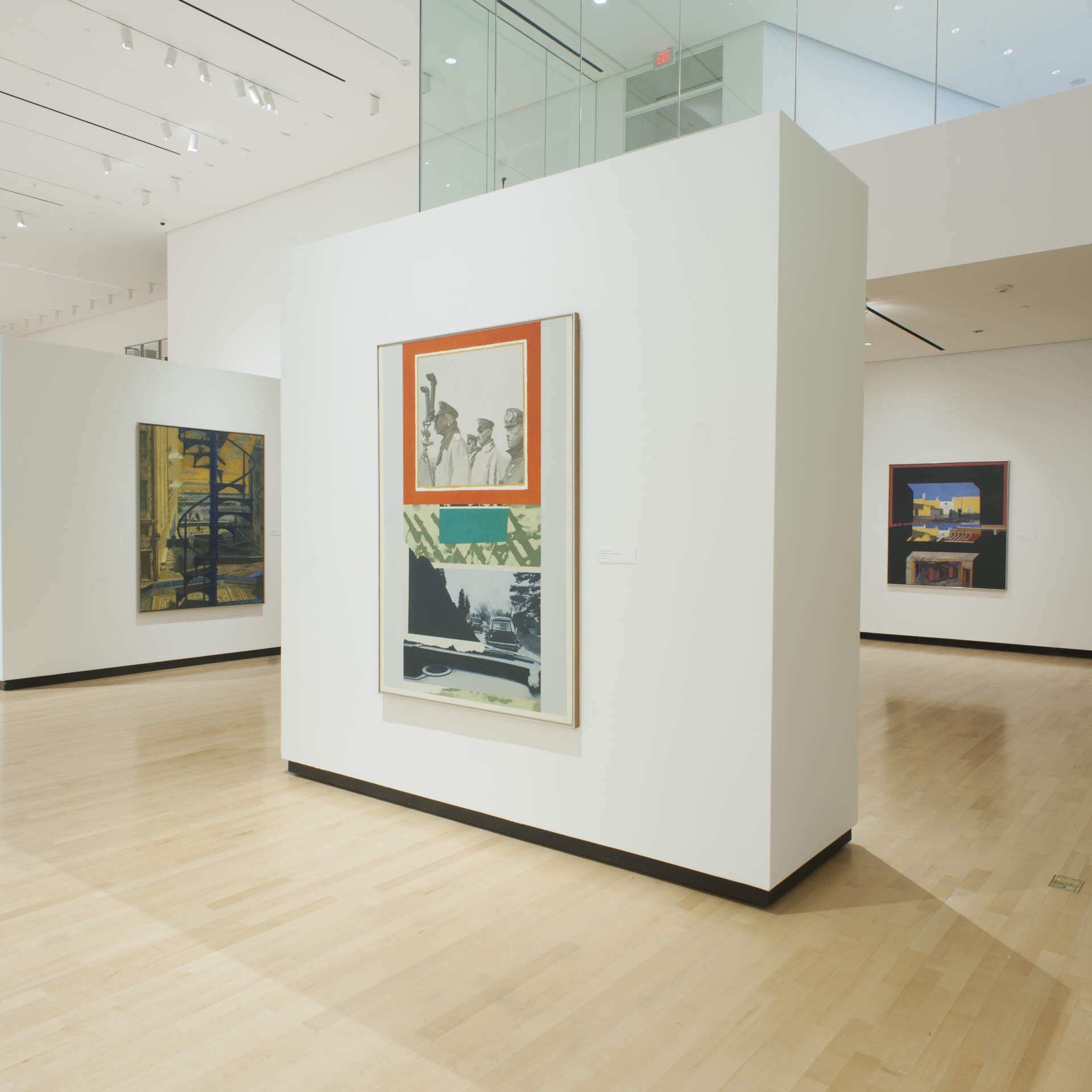
The Contradictions of Being: Composite Works by Harvey Breverman
Past
Nov 9, 2018 - Feb 24, 2019
Harvey Breverman is an influential educator, internationally recognized master printer, and painter. He was hired to teach drawing at the University at Buffalo in 1961 by Phillip Elliot (1903-1985) and promoted to full professor in 1969. He led the printmaking department there until his retirement in 2005. The exhibition The Contradictions of Being: Composite Works by Harvey Breverman focuses on works by the artist starting in the 1970s, which employ the technique of montage, bringing together disparate elements in a composition in order to create tension.
His Discontinuous Sequence series, a focus of this exhibition, executed between 1972 and 1974, was made in many ways as an immediate reaction to the political unrest on college campuses in the late 1960s and early 1970s in response to the Vietnam War. Around the same time, Breverman sat on the committee that approved the inclusion of the Department of Media Studies, founded by Gerald O’Grady, as a part of the School of Arts & Letters at the University at Buffalo in 1973. Tony Conrad (1914-2016), a faculty member in that program, introduced him to the writings of Soviet film directors Dziga Vertov (1896-1954) and Sergei Eisenstein ((1898-1948). Eisenstein’s essay on the importance of montage, A Dialectic Approach to Film Form (1949), was an important influence on work from this period.
Later works included in the exhibition employ the process of montage in other ways. His series Terezin, Polyln and Fenstere Medina reflect on the Nazi occupation of Poland and Czechoslovakia during the Second World War. Various objects and architectural fragments from German concentration camps and synagogues destroyed during the war are used to memorialize the stories of friends and family who were lost or narrowly escaped the terror of that conflict. Reactions to the upheavals of this period of history are less immediate. Given almost half a century to contemplate, these works reflect on the genocide of European Jews between 1941 and 1945, and its lasting impact on the world.